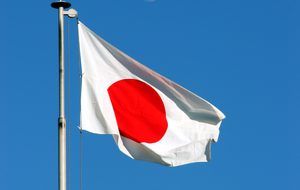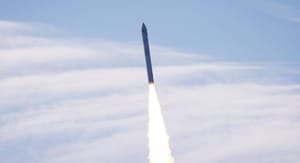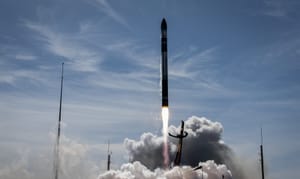
Disclaimer: This article was written on the 17th of September 2023 so some information may be outdated.
This article is intended as a general explanation of the Japan Aerospace Exploration Agency, its International Space Station operations, and active orbital launch vehicles.
Japan Aerospace Exploration Agency
The Japan Aerospace Exploration Agency, commonly known as JAXA, is the space agency of Japan and was formed on the 1st of October 2003 after Japan's Institute of Space and Astronautical Science, the National Aerospace Laboratory of Japan, and National Space Development Agency of Japan were merged to create it. The Japan Aerospace Exploration Agency is believed to have a budget of 212.4 billion Japanese yen, or 1.45 billion United States dollars (this number in Yen was from using the exchange rate on the 2nd of September 2023 and the agency’s budget was from fiscal year 2021). The agency is headquartered in Chōfu in the western side of the Tokyo metropolis.

Japan’s International Space Station Contributions
The contribution to the International Space Station from the Japan Aerospace Exploration Agency was the Japanese Experiment Module, sometimes shortened to JEM, which consists of five major components. This module is also the largest module and had its components launched over three launches. It is also referred to as Kibō.
The largest of these is the Pressurized Module which is the core component of the Japanese Experiment Module and is connected to the Harmony module. It contains twenty-three International Standard Payload Racks with ten dedicated to science experiments while the remaining thirteen are dedicated to storage and the modules storage. At the end of the Pressurized Module is an airlock where science experiments can be placed and moved outside by the Japanese Experiment Module remote manipulator system to the Exposed Facility without the need for extra-vehicular activities by crew.
Attached to the end of the Pressurized Module is the Exposed Facility. The Exposed Facility is a science platform out in the vacuum of space on the International Space Station where experiments can be attached to and retrieved by the Japanese Experiment Module remote manipulator system. The Exposed Facility has twelve Exposed Facility Unit ports with eight replaceable by the Japanese Experiment Module remote manipulator system and the remaining four are replaceable during extra-vehicular activities by crew.
On top of the Pressurized Module is the Logistics Module. The Logistics Module is used as a storage space for spare items, experiments, and samples.
Also attached to the end of the Pressurized Module is the Japanese Experiment Module remote manipulator system. The Japanese Experiment Module remote manipulator system is used for servicing the Exposed Facility. The arm is ten meters long and uses the same grapple fixtures as Canadarm2.
The last part of the Japanese Experiment Module is the Inter-orbit communication system. The Inter-orbit communication system was used to communicate with ground stations. The Inter-orbit communication system was jettisoned from the International Space Station in February 2020 and was destroyed on re-entry on the 17th of March 2023.

H-IIA orbital launch vehicle
The only active H-II rocket from Japan is the H-IIA as the original H-II was retired in November 1999 and H-IIB was retired in May 2020. For engines the H-IIA has one LE-7A, producing 112 tons of thrust, on the first stage and one LE-5B, producing 14 tons of thrust, on the second stage. Its first flight was on August 29th 2001. H-IIA keeps its four-meter diameter up the entire vehicle, unlike the H-IIB which had a wider first stage. The rocket can send 10,000 or 15,000 kilograms to low Earth orbit and 4,100 or 6,000 kilograms to geosynchronous transfer orbit depending if two or four solid rocket boosters are used.

Epsilon orbital launch vehicle
The Epsilon rocket is a small launch vehicle that uses either three or four stages depending on the desired orbit. Epsilon can deliver 1,500 kilograms to low Earth orbit or 590 kilograms to sun-synchronous orbit. The first stage is powered by an SRB-A3 solid rocket motor burning for 116 seconds and generating 231 tons of thrust. The second stage is powered by an M-35 solid rocket motor burning for 129 seconds and generating 45 tons of thrust. The third stage is powered by a KM-V2c solid rocket motor burning for 91 seconds and generating 10 tons of thrust. The optional fourth stage can burn a liquid hydrazine fuel for up to 1100 seconds using a liquid fuel engine generating 40 kilograms of thrust.




